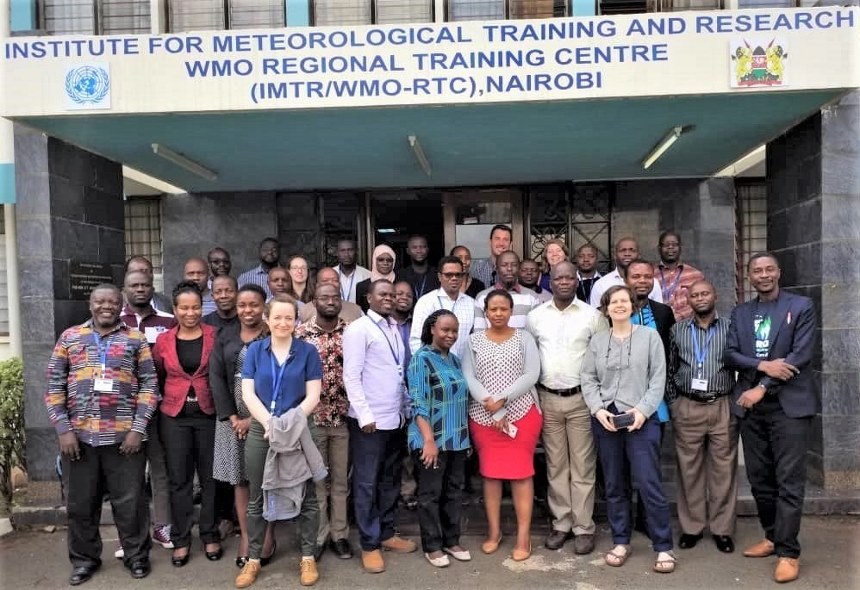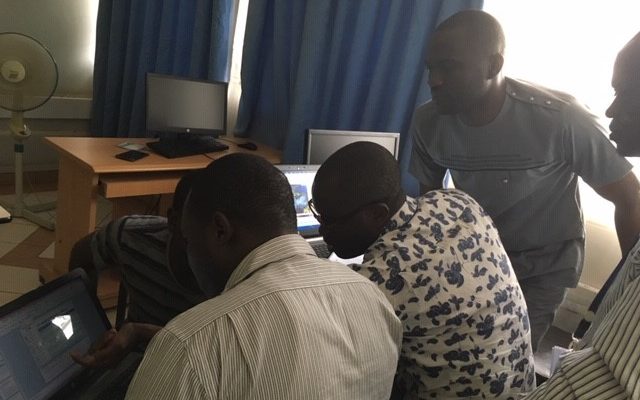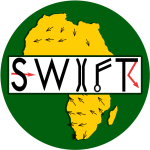By Dr Jennifer Fletcher for GCRF African SWIFT
High-impact weather leads to devastating losses in tropical Africa each year. Precipitation forecasts from weather-prediction models remain very poor, and existing tools for very near-term prediction remain under-utilised.
In September, African SWIFT is undertaking Testbed 3, an intensive two-week trialling of new approaches and tools to short-term, high-impact weather prediction for Africa. The testbed is a cornerstone event of the SWIFT programme, building capability of African forecasting by advancing the skill of near-term prediction of severe storms, a critical development that will save lives and protect African economies.

Upcoming testbed builds on SWIFT successes in nowcasting
Testbeds are not commonly held outside of the US National Severe Storms Laboratory, and African SWIFT Testbeds are the first of their kind for tropical Africa. Testbed 3 builds on the previous success of African SWIFT Testbed 1, which was held in two phases in early 2019. Testbed 1 introduced operational forecasters in SWIFT partner organisations to the use of convection-permitting forecasting models, including convection-permitting ensemble forecasts, for the first time.
Convection-permitting models offer a significant improvement in forecast skill (Woodhams et al 2018), especially for precipitation in the tropics. When they are run as an ensemble — i.e., a suite of simulations, each with a small initial change in order to produce a range of different forecasts — the likelihood of extreme rainfall, and the confidence of the forecast, can be assessed (Cafaro et al 2020).
Testbed 1 also introduced many forecasters to the use of satellite products for nowcasting — the very near-term prediction of severe storms based on extrapolation of observations rather than on forecasting models. There is currently very little nowcasting done in Africa, but satellite-based nowcasting could bring significant improvement to short-term warnings (Roberts et al 2021) and was embraced enthusiastically in Testbed 1.
During the event, the satellite products were made available through a web portal hosted at the University of Leeds, but in the last two years, SWIFT has equipped partner organisations with satellite receiving dishes. Partners have begun to set up the system to produce satellite-based nowcasting products locally. This will allow forecasters to access nowcasting tools through their usual work stations, and universities can store the data for research purposes. Furthermore, since Testbed 1, SWIFT researchers have demonstrated the skill of the satellite-based nowcasting methods (Hill et al 2020).

However, there is still work to be done in bringing about lasting improvements in operational forecasting, which works on quick time scales and requires seamless, efficient workflows – Standard Operating Procedures (SOPS) — for forecasters. In Testbed 3 we will develop a set of proposed operating procedures for synoptic forecasting, high-impact weather forecasting, and nowcasting.
In order for forecasts to be useful they have to provide information on the spatial and temporal scales that are useful for forecast users. For this reason, Testbed 3 is fully integrating expert users into its process. These users are technicians who work for agencies and organisations in sectors such as disaster management, fishing, and sanitation. They have experience making high-impact decisions based on forecast information, and they will provide feedback on the quality and usefulness of the forecasts throughout the testbed. A major component of the testbed will include ongoing refinement of the forecast products and the procedure for generating them based on user feedback. Producing forecasts for specific users, and integrating user requirements into the testbed workflow, is a key part of Testbed 3.
Training builds critical skills for Testbed 3
To prepare for Testbed 3, in late May, African SWIFT is holding a series of three events including a training on forecast verification, a training on the use of ensembles and convection-permitting weather prediction models, and a workshop bringing together researchers, forecasters, and forecast users to discuss new approaches to severe storm forecasting and nowcasting. Participants include forecasters, researchers and users from SWIFT partner countries – Ghana, Kenya, Nigeria, and Senegal.

The upcoming events are needed to deliver the significant levelling up envisioned for Testbed 3 and will ensure participants have the skills and knowledge needed to carry out activities effectively.
- The Co-production Workshop, led by ACMAD’s Victor Indasi, will introduce users to some of the tools and methods that will be used in the testbed and will gather feedback and ideas so that SWIFT scientists will be able to deliver forecasting and nowcasting to different users, according to their requirements.
- The Verification Training, led by Thorwald Stein at University of Reading and David Koros at the Kenya Meteorological Department, will teach participants the basic skills needed to carry out quantitative forecast verification, helping them understand or carry out the verification needed during the testbed.
- The Convection-permitting and Ensembles training, led by Cathryn Birch at University of Leeds, will help participants understand the principles behind regional convection-permitting and global ensemble forecasting and how to use and interpret the forecasts alongside other forecast products, a key part of synoptic forecasting.
In order to realise the potential from these events, it is critical to ensure that participants are prepared – this is the overarching aim of the training event. Outcomes of the workshops will inform the development of in-depth Proposed Operating Procedures to be used during Testbed 3 for high-impact weather forecasting and nowcasting. Furthermore, it is essential to identify a clear way forward for operational forecasting after the testbed, to ensure that African meteorological agencies can continue applying lessons to operational procedures to improve weather forecasting in years to come.
About the Author
Dr Jennifer Fletcher is a Senior Research Scientist at the National Centre for Atmospheric Science at the University of Leeds. She is an expert in the physical processes leading to storms and rainfall in the tropics. Jennifer is leading the scientific planning of African SWIFT Testbed 3.
